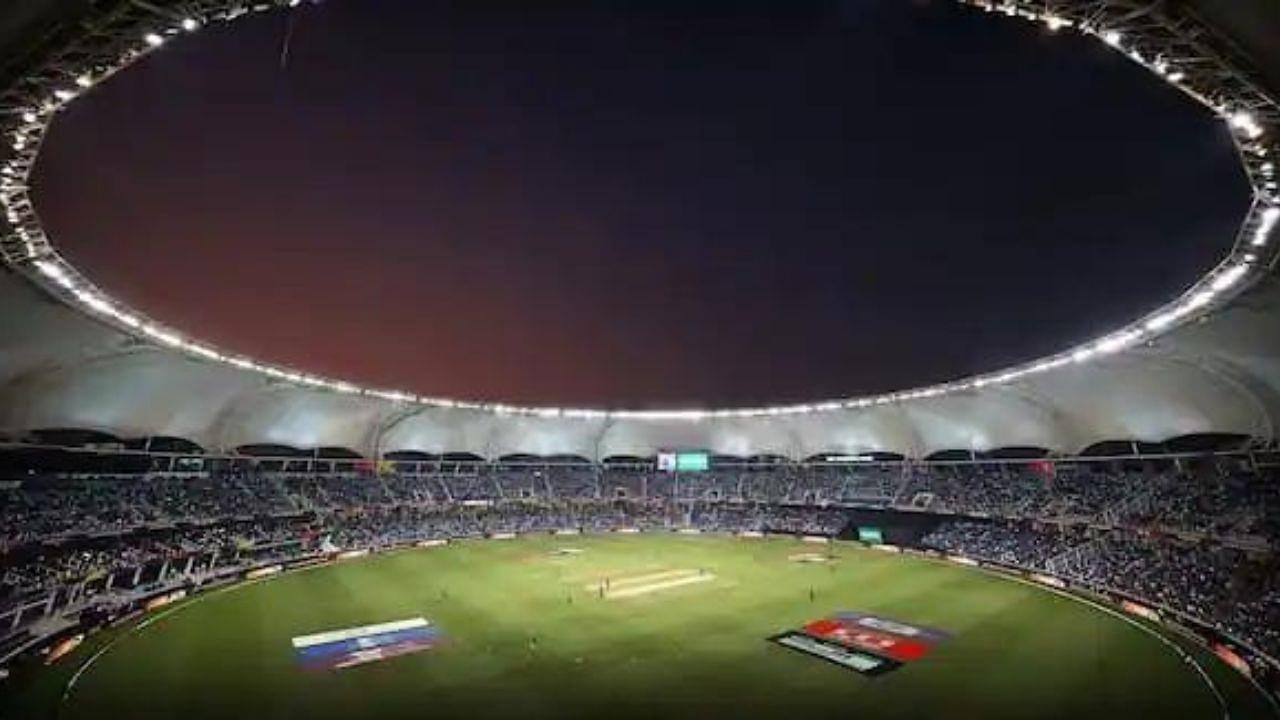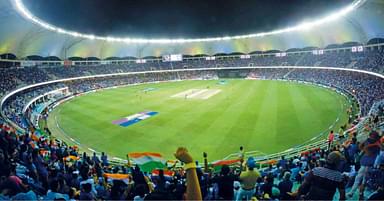Dubai International Stadium boundary length: The venue has bigger squarer boundaries as compared to both the straight ones.
Advertisement
The much-anticipated Asia Cup 2022 has commenced, with Sri Lanka taking on the Afghanistan challenge in the first match of ‘Group B’, at the Dubai International Stadium.
On a pitch which has generally assisted the bowlers, with an average score of mere 144.6 in the T20I format, Afghanistan skipper Mohammad Nabi did not hesitate to bowl first after winning the Toss.
The pacers did not disappoint their captain one bit, as they got rid of the Sri Lankan top-3, within the first two Overs, and with only 5 runs on the scoreboard.
Bhanuka Rajapksa did make use of all his experience with a fine 38 off 29 deliveries, but the rest of the batters in the order, were simply not up for the task, as the spinning trio of Mujeeb-ur-Rahman (4-0-24-1), Mohammad Nabi (4-0-14-2), and Rashid Khan (4-0-12-0) not only picked up wickets at regular intervals, but also kept the run-rate in check, with Sri Lanka, at the time of writing, struggling to get past the 100-run mark.
Wickets continue to tumble in Dubai!!
Afghanistan has picked the 8th wicket courtesy of some excellent bowling and much-better fielding, with two run-outs in two successive deliveries.
🇱🇰 – 69/8 after 13 overs#AfghanAtalan | #AsiaCup2022 pic.twitter.com/u4Oiyha9PW
— Afghanistan Cricket Board (@ACBofficials) August 27, 2022
Dubai International Stadium boundary length
The straighter boundaries at the Dubai International Stadium are relatively smaller, at 65 meters across the vertical length.
However, with around 80 meters on either sides of the wicket, the squarer boundaries are comparatively bigger, thereby allowing the spinners to give the ball a bit of extra air, and bowling them mostly away from the batters’ reach.
Moreover, since the last year, no team has been able to breach the 200-run mark in T20Is, as chasing teams have dominated as far as the match results are concerned, especially in the past couple of years.




